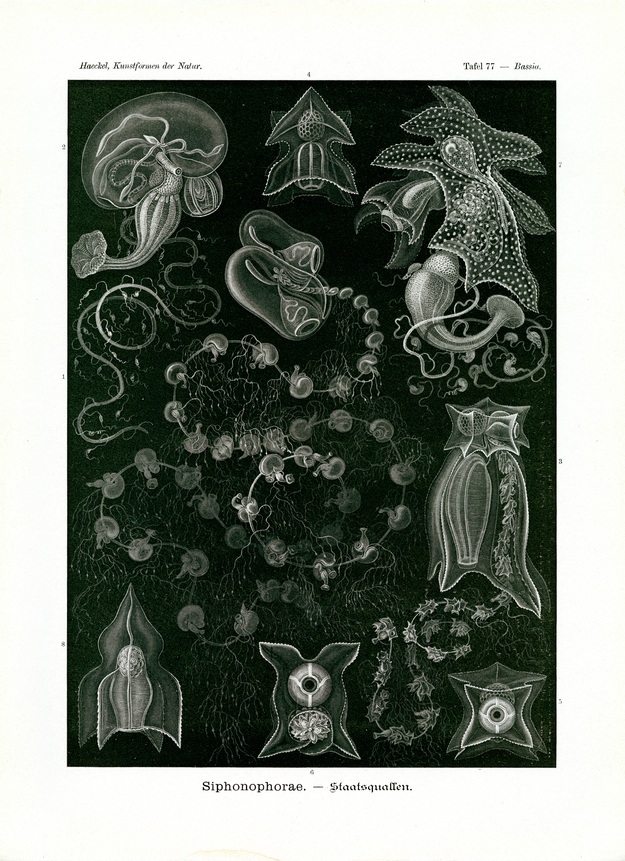Translation of the original German introduction by Ernst Haeckel:
Phylum of Cnidaria (Nesseltiere); - class of Siphonophorae (Staatsquallen); - order of Calyconectae (Kelchquallen).
The order of ‘cup-medusas’ (Calyconectae) is distinguished from all other Siphonophorae by the non-availability of an air-filled ‘swim-bladder’ (Physophor). Their swimming locomotion is effected by the muscles of the medusa-shaped ‘swimming-bells’ (Nectocalyces) alone. Usually there are two large ‘swimming-bells’ (Diphyidae) on top of the parting of the elongated stem; at times these bells are of very different size, organized one behind the other (fig. 3), at times they are of almost equal size facing each other (fig. 1). In other cases the ‘swimming body’ (Nectosoma) is formed by several ‘swimming bells’ organized in two rows (Polyphyidae). The ‘feeding body’ (Siphosoma) is composed of numerous small groups of individuals, small colonies (Cormidia) that are distributed in regular intervals along the filamentous stem. Cormidia can detach from the stem and swim independently; such isolated small colonies have earlier been considered independent species and given special names (Eudoxia, fig. 2 and 7). Usually each Cormus consist of two individuals, a sterile (infertile) and a fertile (sexually mature). The sterile individual is a medusa with stomach and stomach opening (Siphon) as well as a peculiarly shaped umbrella, without sexual organs. The fertile individual possesses a differently shaped umbrella; its gastric tube has no mouth opening but forms ‘sexual products’. The shape of the males (fig. 7) usually differs from that of the females (fig. 8).
The remarkable colonies of these ‘cup-medusas’, most sensitive and flexible, can be compared to a long railway with two engines pulling in front (the two big ‘swimming bells’). The carriages correspond to the individual colonies. A medusa-shaped larva develops out of the eggs; its gastro-vascular cavity elongates into forming the stem that produces the individual colonies through budding; here also alteration of generation exists.
Translation by VR Translators Bangalore
We've scanned the original lithography at 1200dpi on the Epson A3 scanner of A3 scanner huren. You can download a 400dpi JPEG here.
